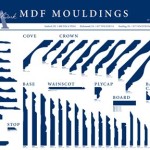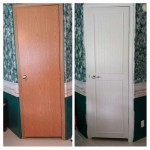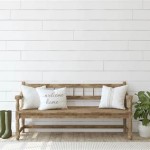How To Identify Your Interior Design Style
Identifying one's interior design style can feel like navigating a maze. The sheer volume of styles, influences, and aesthetics available can be overwhelming. However, understanding personal preferences and translating them into a cohesive design plan is a crucial first step in creating a space that reflects individual tastes and needs. This process of self-discovery involves introspection, observation, and a willingness to experiment. The following guide elucidates key methods for pinpointing your unique interior design style.
Analyzing Existing Preferences and Inspirations
One of the most effective approaches to discovering your interior design style is to carefully analyze your existing preferences. This involves scrutinizing the spaces you already find appealing – both real and virtual – and identifying the recurring elements that resonate with you. Consider homes of friends and family, restaurants, hotels, and even online platforms like Pinterest and Instagram. The goal is to uncover patterns and discern common threads that point towards a specific aesthetic.
Start by creating a visual collection of spaces that evoke positive emotions. Save images from magazines, websites, social media, or take photographs of physical spaces you admire. Don't filter yourself based on perceived practicality or budget at this stage; focus solely on what visually attracts you. Once you have a substantial collection, begin to categorize the images based on recurring characteristics. Look for similarities in color palettes, furniture styles, architectural details, and overall ambiance.
Consider the following questions when analyzing your visual collection:
*Are there specific color schemes that consistently appear? Do you gravitate towards neutral tones, bold hues, or a combination of both?
*What types of furniture are prevalent? Are you drawn to sleek, modern designs, or more traditional, ornate pieces?
*What materials and textures appeal to you? Do you prefer natural materials like wood and stone, or more synthetic options like metal and glass?
*What architectural details are present? Are you drawn to spaces with high ceilings, large windows, or exposed brick?
*What is the overall feeling or mood evoked by the spaces? Do you prefer spaces that are cozy and inviting, or more formal and sophisticated?
By answering these questions and identifying the recurring elements in your visual collection, you can begin to narrow down your preferences and gain a clearer understanding of the design styles that resonate with you.
Exploring Different Design Styles and Their Characteristics
Familiarizing yourself with the various established interior design styles is essential for identifying your personal aesthetic. Each style possesses distinct characteristics, including specific color palettes, furniture styles, materials, and architectural details. Understanding these nuances allows you to recognize and articulate your preferences more precisely.
Here are some of the most common interior design styles, along with their key characteristics:
*Modern:
Characterized by clean lines, minimalism, and functionality. Modern spaces often feature neutral color palettes, geometric shapes, and a focus on natural light. Furniture is typically sleek and streamlined, with minimal ornamentation. Key materials include steel, glass, and concrete. *Contemporary:
Similar to modern, but more fluid and evolving. Contemporary design incorporates current trends and embraces a wider range of materials and textures. Color palettes are often neutral, but may include pops of color. Furniture is comfortable and functional, with an emphasis on open space. *Traditional:
Emphasizes elegance and formality. Traditional spaces typically feature rich colors, ornate furniture, and classic architectural details. Fabrics are often luxurious, such as velvet and silk. Key materials include wood, marble, and brass. *Minimalist:
Strives for simplicity and functionality. Minimalist spaces are characterized by clean lines, neutral color palettes, and a focus on essential elements. Furniture is minimal and functional, with an emphasis on open space. Clutter is avoided at all costs. *Bohemian:
Embraces eclecticism and individuality. Bohemian spaces are characterized by vibrant colors, mixed patterns, and a relaxed, informal atmosphere. Furniture is often vintage or repurposed. Natural materials and textures are key elements. *Industrial:
Inspired by factories and warehouses. Industrial spaces typically feature exposed brick, concrete floors, and metal accents. Furniture is often utilitarian and functional. Color palettes are typically neutral, with pops of color provided by artwork and accessories. *Scandinavian:
Emphasizes simplicity, functionality, and natural light. Scandinavian spaces are characterized by clean lines, neutral color palettes, and natural materials like wood and wool. Furniture is typically simple and functional, with an emphasis on comfort. *Coastal:
Evokes the feeling of being near the ocean. Coastal spaces typically feature light and airy color palettes, natural materials like linen and rattan, and nautical-inspired accessories. Furniture is often comfortable and relaxed. *Farmhouse:
Combines rustic charm with modern comfort. Farmhouse spaces typically feature natural materials, such as wood and stone, and a neutral color palette with pops of color. Furniture is often vintage or repurposed, and accessories are often handmade or antique.By researching and understanding the characteristics of different design styles, you can identify the elements that resonate with you and begin to refine your personal aesthetic. Don't be afraid to mix and match elements from different styles to create a unique and personalized look.
Experimenting with Different Elements and Combinations
The process of identifying your interior design style is not solely theoretical; it often requires practical experimentation. Trying out different elements and combinations in your own space allows you to see how they translate in real life and refine your preferences based on direct experience. This can involve small-scale changes like rearranging furniture, swapping out accessories, or painting a small area of a wall. These experiments help solidify your choices and prevent costly mistakes when undertaking larger renovations or purchases.
Start small by focusing on a single room or area in your home. Begin by experimenting with different color palettes. Paint swatches are an inexpensive way to test how different colors look in your space under varying lighting conditions. Consider creating a mood board with fabric samples, paint chips, and images of furniture and accessories that you are considering. This allows you to visualize how the different elements will work together before committing to any purchases.
Experiment with different furniture arrangements to see how they affect the flow of the space and the overall feeling. Try rearranging your existing furniture to create different focal points and conversation areas. Consider adding or removing pieces to see how they impact the balance and harmony of the room.
Accessorizing is another way to experiment with different styles without making major changes. Try swapping out your throw pillows, rugs, and artwork to see how they transform the look and feel of the space. Consider adding plants, candles, and other decorative items to create a more inviting and personalized atmosphere.
Don't be afraid to try something unconventional or unexpected. Sometimes the most interesting and successful designs are those that break the rules and challenge conventions. The key is to trust your instincts and create a space that reflects your unique personality and style.
Document the process of your experimentation by taking photographs of different arrangements and combinations. This allows you to visually compare the results and identify what works best for you. Over time, you will develop a clearer understanding of your preferences and be able to confidently create a space that you love.
Ultimately, identifying your interior design style is an ongoing process of self-discovery. It requires a willingness to explore, experiment, and refine your preferences over time. By analyzing your existing preferences, exploring different design styles, and experimenting with different elements, you can create a space that is both beautiful and functional, and that truly reflects your unique personality.

Dear Urbaneer How Do We Establish Our Interior Design Style

What S My Design Style Here How To Figure It Out Interior Decorating Styles House

How To Choose An Interior Design Style The Beauty Revival

How To Find Your Unique Personal Interior Design Style Dwell Beautiful

Find Your Interior Design Style Quiz Southern Motion

A Guide To Interior Design Styles How Find Your Unique Home Decor Style Primer

5 Popular Interior Design Styles Explained Modern Wabi Sabi Maximal Organic More

Why Is It Important To Determine Your Design Style Cristina Isabel

Finding Your Home Decor Style Interior Design Tips

Interior Design Style Quiz How To Identify Your Dogs N Decor
Related Posts








